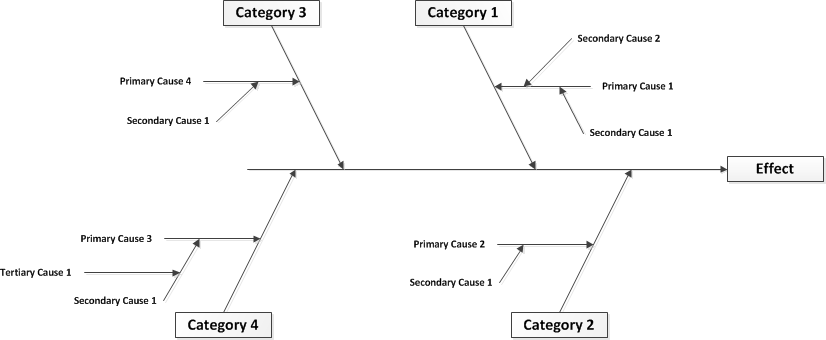
Creating this diagram encourages teamwork and builds trust between departments. 5 Whys technique can be used during brainstorming sessions. Brainstorming provides different point o views that you can take advantage of team members experiences. Then, define the categories of causes related to the problem and start brainstorming sessions. In order to use this technique, create a team and agree on the problem. It is one of the seven basic tools of quality widely used for problem-solving. The fishbone diagram is a powerful process improvement technique which greatly helps to determine the important factors involved in a process. Sometimes it can be hard to determine the root cause of a problem because of the team members bias.In complex situations, it is difficult to represent the interrelated nature of problems and causes.For a realistic result, a skilled team is required to make brainstorming.Limitations/Drawbacks of Fishbone Diagramīelow are some of the limitations of this quality management tool (Cause and Effect Diagram or Ishikawa Diagram). Helps to determine the methods to improve the process and take corrective actions.Improves decision making within the project team.Stimulates your team to explore the root cause of a problem.Encourages brainstorming about the reasons for a certain result because it captures all the causes.Demonstrates all causes simultaneously.It is a visual tool which displays the links and relationships among the potential causes and results displayed in the diagram.Benefits of Fishbone Diagram (Cause and Effect Diagram or Ishikawa Diagram)īelow are a few benefits of this diagram (Cause and Effect Diagram or Ishikawa Diagram). The solution can be determined and corrective actions can be taken. Once the fishbone is completed, an investigation can be made with team members to identify the root cause of the problem. Note that the 5 whys technique is often used in conjunction with the fishbone – keep asking why until you get to the root cause. Write sub-causes branching off the cause branches. Then, ask again “Why does this happen?” for each cause. If the causes are related to various categories, you can write them in several places. Write the causes horizontally to the fishbone where they belong. During brainstorming, ask “Why does this happen?” Then note the answer.

In this step, brainstorming can be made by group/team members based on their prior experiences. Major categories often include Material, Manpower, People, etc. Then, the major categories can be written as branches from the main arrow. Major categories can be defined by the help of brainstorming sessions. Define the major categories of causes for the Problem Once all the project team agreed on the problem, the problem expression can be written in a box at the mouth of the fish.Ģ.

How to Create a Fishbone Diagram (Cause and Effect Diagram or Ishikawa Diagram)?īelow steps can be followed to create a fishbone diagram for problem solving. Many classifications can be made for categorization of causes in a fishbone diagram however, the above are more popular than the others. In the Marketing industry, you can categorize the factors (causes) by 7Ps: In the Manufacturing industry, you can categorize the factors (causes) by 6Ms: In the service industry, you can categorize the factors (causes) by 4Ps: They may be helpful to create the framework. Below are a few suggested categories for some industries. Causes of problems may arise from typical categories based on the industry. Fishbone Diagram (Cause and Effect Diagram or Ishikawa Diagram)įishbone (cause and effect diagram or Ishikawa diagram ) diagrams are commonly used in many industries such as service, manufacturing, marketing, and construction.The seven basic quality tools are graphing techniques that people commonly use for quality control management purposes. The Fishbone Diagram (Cause and Effect Diagram or Ishikawa Diagram) is one of the seven basic tools of quality. It helps to understand what causes a problem and what are the possible ways to solve it. Each defect or cause is a source of variation. It is a visual quality management tool that provides an overall list of possible causes to determine the root cause of a specific event. This diagram looks like a fish skeleton so that it took its name from its appearance. The concept of the Fishbone Diagram was developed by a Japanese Professor, Dr. In this article, we will review the Fishbone diagram (cause and effect diagram or Ishikawa diagram ) as a problem solving tool and discuss the advantages and limitations of it. Basically, it analyzes various possible causes of a problem with the help of brainstorming sessions. Fishbone Diagram (Cause and Effect Diagram)įishbone diagram, also known as cause and effect diagram or Ishikawa diagram is a quality management tool that is commonly used to identify the root cause of a problem.


 0 kommentar(er)
0 kommentar(er)
